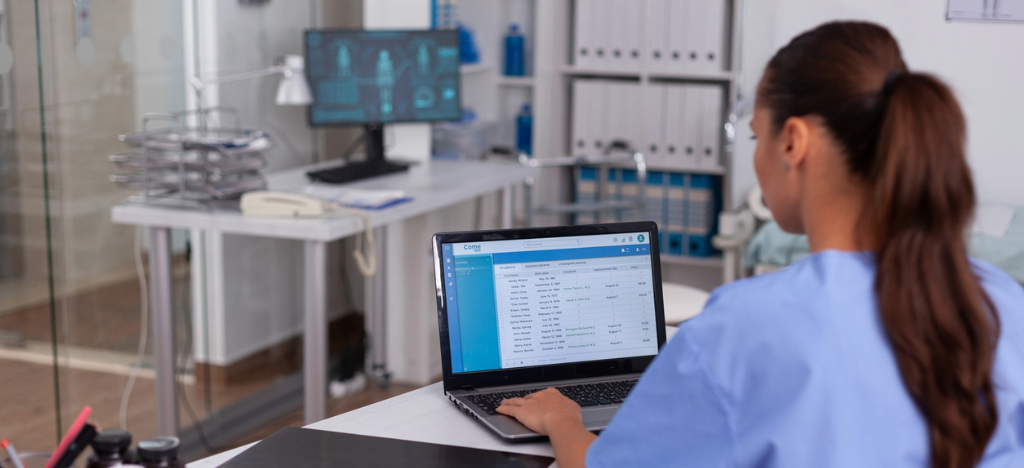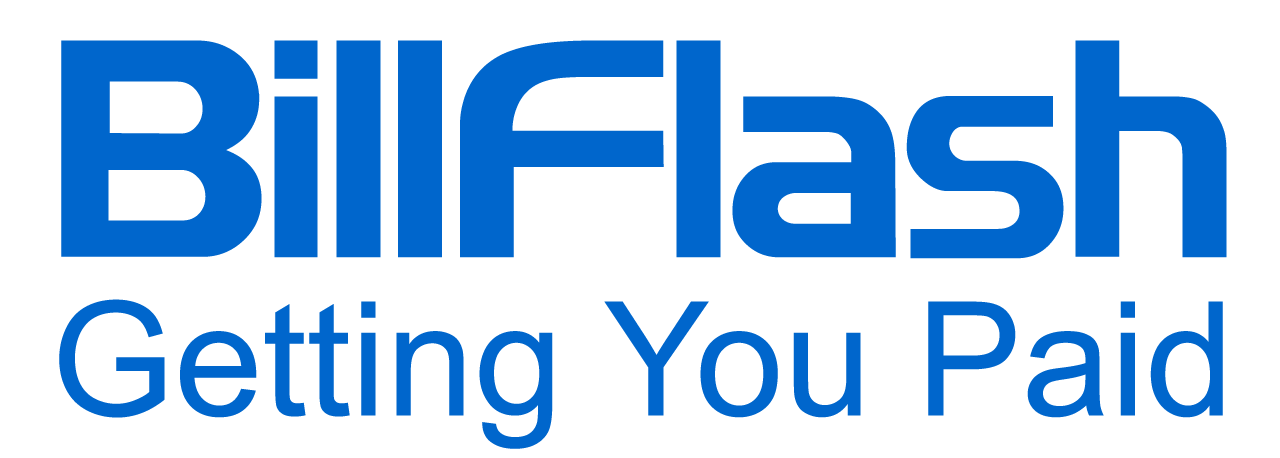Explore questions medical practices should ask when choosing billing software and learn how to achieve a more transparent billing process.
Rising patient responsibility and tighter margins make efficient billing more critical than ever in healthcare. As healthcare costs shift increasingly to patients, medical practices need solutions that can handle this new reality. With 75% of consumers wanting to pay medical bills online, the right billing software for medical practices isn't just a back-office tool; it's the foundation of a healthy revenue cycle.
However, many practices continue to struggle with outdated billing approaches. Manual processes continue to drain staff time and increase errors, with 80% of medical bills containing errors, while 71% of providers still rely on paper processes. Meanwhile, more patients are delaying or avoiding payments due to confusing bills and high costs. When you factor in disconnected systems that can lead to double-entry and blind spots, as well as growing compliance and security requirements, it's clear that something needs to change.
The good news is there's a path forward. Billing software designed to streamline payments, alleviate stress, and enhance the patient financial experience can transform the operations of medical practices. Today, we will share 10 questions every medical practice should ask when choosing billing software. By asking these questions upfront, you not only identify the right solution for your practice but also ensure that your patients experience a more transparent billing process.

1. Is It Easy for My Staff to Use Every Day?
Nothing hurts productivity more than software that constantly conflicts with your staff's workflow. Complicated billing software creates daily frustrations. Staff spend more time clicking through confusing dashboards than helping patients, and every software update feels like learning a new language. When your staff doesn't look forward to logging into the billing software, morale decreases and the number of errors increases. Studies show that healthcare workers already spend up to 28 hours per week on administrative tasks, so the last thing medical practices need is software that complicates these tasks.
The best billing software should be intuitive from the start. Look for software with intuitive dashboards that logically present information. The best platforms organize workflows to match how your staff processes their tasks, reducing the mental gymnastics of switching between different thinking patterns.
Pay attention to the learning curve during demonstrations when looking for the right software for medical practices. If the vendor takes more than an hour to demonstrate basic functions, that is a red flag. Quality billing software should feel familiar quickly, with common actions requiring minimal clicks. For example, BillFlash combines billing, payments, and collections in one interface, reducing the load of managing multiple systems. Training and support resources are also crucial. Look for vendors offering onboarding programs, and not just a quick setup call. Ongoing education should be available, whether through webinars, help documentation, or responsive customer service. BillFlash offers ongoing education through weekly training sessions, monthly webinars, and dedicated onboarding and support meetings.
2. Will It Integrate With My Current EHR/EMR?
Few things frustrate staff more than juggling multiple systems that don't communicate with each other. Integration capabilities can determine the billing efficiency of medical practices. Poor integration creates data silos that force staff to use time-consuming workarounds. When systems don't communicate, you'll face duplicate data entry, version control problems, and the constant risk of errors from manual transfers.
Evaluate the depth of the software's integration, not just connectivity. Some vendors may claim to offer integration, but their billing software only synchronizes basic patient demographic data. Full integration should include patient information and payment posting. The data flow should be bidirectional; charges from your EHR should automatically transfer into billing, while payment information should update patient accounts in real time.
Medical practices should ask specific questions about current systems. How long does implementation take? What data transfers automatically? How are updates and changes synced? A quality billing platform should integrate smoothly with major EHR systems. For example, BillFlash integrates with over 100 EHR/PM platforms, demonstrating the range of connectivity you should expect.
This level of integration means patient information flows automatically between platforms. No more double-entry worries, no more version control issues, just better synced data that keeps your workflow moving. Think about future flexibility as well. If you're planning to change EHR systems, ensure your billing software can adapt without requiring a complete overhaul.

3. How Will Patients Pay—And How Many Options Do They Have?
Payment convenience is directly connected with collection speed. Limited payment options create friction that delays payment and increases the A/R days of medical practices. When patients can't pay the way they want, the staff becomes the middleman for frustrated conversations. With a 243% increase in eStatement use from 2016 to 2024 and 62% of consumers preferring online bill payment, patient expectations have evolved beyond traditional payment methods.
Modern patients expect omnichannel payment options. They want to pay online when a direct deposit comes through at 12 PM, use mobile wallets during lunch breaks, or set up automatic payments. The more convenient you make your payment, the faster the money will arrive in your account. Key payment features include 24/7 online portals, mobile-optimized interfaces, text-to-pay functionality, and automated payment plans. Consider demographic factors; younger patients often gravitate toward digital wallets and instant payments, while older patients may prefer traditional methods such as phone support or mailing a check from a paper statement.
Payment processing flexibility plays a key role in cost management. Some billing software forces you to use their merchant services, potentially increasing your transaction costs. Others, like BillFlash's gateway, work with your existing merchant account or provide competitive processing rates, giving you control over your payment costs. For medical practices, BillFlash delivers the flexibility patients expect by providing comprehensive payment solutions that align with patients’ preferred payment methods.
From OnlinePay available 24/7 to mobile-friendly options through PayWoot.com, PlanPay payment plans, and AutoPay for set-and-forget convenience, patients can pay their way. Multi-channel payments, including credit/debit, ACH, Apple Pay, Google Pay, and checks, paired with the patient portal, enable patients to pay from a phone, computer, through the mail, or in the office. The result is fewer payment-related interruptions for staff and faster collections for medical practices.
4. Can I Automate Reminders and Follow-Ups?
Manual payment reminders consume significant staff resources and produce inconsistent results. Medical practices often spend several hours each week on follow-up calls rather than focusing on patient care and revenue-generating activities. Effective automation goes beyond basic reminder schedules. Look for billing software that personalizes communications while allowing practices to adjust messaging tone and frequency based on response patterns. Smart automation should also support multiple communication channels.
BillFlash makes automation simple and reliable. Practices can send BillFlash eBill Notices via text and email, while PayReminders provides structured follow-ups by sending up to three text messages and three emails each month until the balance is paid. Patients automatically receive reminders 7, 14, and 21 days after the first bill is sent. Text messages, with a 98% open rate, are especially effective for time-sensitive reminders, while emails ensure patients who prefer that channel are also reached.
By providing these options, medical practices increase the likelihood that notices and reminders will be seen and acted upon. If a patient makes a payment, the system immediately removes them from the sequence. This saves staff time while maintaining a professional, patient-friendly approach. Effective reminder systems also do more than send generic notices. They personalize communication based on payment history, preferences, and account status. Tracking results is equally important.

5. Does It Support Patient Financing?
Even with automated reminders, some patients still struggle to pay their balances upfront. When this happens, your staff will spend time explaining payment options, processing paperwork, and answering questions about affordability. Without built-in financing solutions, your staff spends valuable time on conversations that could be automated. Integrated financing should be seamless for patients and staff. The application process should also be quick and user-friendly. Ideally, it should take less than two minutes with minimal required information. Long, complicated applications will likely defeat the purpose of offering financing if they cause patients to exit the application.
Look for financing options that serve the diverse needs of patients. Some patients need extended payment plans for large procedures, while others may need to split smaller balances across a few months. The best systems offer multiple options, from short-term interest-free plans to longer-term financing for major procedures. Consider the impact on cash flow. Some financing companies pay medical practices immediately upon approval, improving working capital. Others pay as patients make payments, which might affect financial planning.
BillFlash FlexPay meets the need for patient financing. Patients can complete an application in under one minute, with no hard credit checks and a 90% approval rate. Approved patients receive a guaranteed interest-free plan, while medical practices are paid in full the next business day. This integration reduces administrative work, helps patients manage costs, attracts and retains patients, and ensures consistent revenue.
6. How Does It Help Me Reduce A/R Days?
Long A/R cycles create constant pressure on your staff to chase payments. The longer bills sit unpaid, the more time your staff spends making collection calls instead of focusing on current patients and new appointments. Effective billing software addresses accounts receivable through multiple approaches. Pre-visit billing capabilities enable patients to pay in advance of appointments, eliminating post-service collection delays. Point-of-service payment tools help staff collect payments during visits when patients are most likely to pay.
Reports help identify bottlenecks in the collection processes of medical practices. Look for systems that track accounts receivable timelines, payment trends, and staff productivity metrics. This data enables you to identify which processes need improvement and measure the impact of changes.
BillFlash's PreBill solution simplifies pre-visit billing for office and telehealth appointments. HIPAA-compliant PreBill links can be sent via text or email, directing patients to PayWoot.com, where they can view and pay their balances quickly and securely. Patients often complete payments in just three steps, and the system works even without a formal bill. By providing patients with early visibility and multiple payment options, PreBill helps practices reduce accounts receivable days, improve cash flow, and minimize staff time spent chasing payments.
7. Will It Improve My Collections Without Adding Staff?
As patient balances grow, so does pressure on your existing staff to recover more money. Traditional collection agencies offer little transparency and even less control, and hiring additional collections staff strains budgets and requires training. Integrated collections should align with your existing workflow, providing your current staff with effective tools.
BillFlash's Integrated Collections solution helps improve collections by working directly within your existing billing workflow. Medical practices maintain control by approving which accounts go to collections, monitoring all contact activities, and receiving notifications of any proposed write-offs. Recovery Specialists licensed in all 50 states handle patient outreach professionally and apply effective methods to maximize revenue while maintaining positive patient relationships.
To ensure clear communication, 75% of the specialists are bilingual, ensuring language is never a barrier. For patients unable to pay in full, pre-authorized payment plans through PlanPay or FlexPay offer a structured way to recover funds that might otherwise be lost. All collected payments are deposited directly into your practice's bank account via BillFlash Pay Services, ensuring you receive funds quickly without relying on a traditional collections agency. By integrating collections into your workflow, BillFlash helps improve recovery rates without the need to hire additional staff.

8. Is It HIPAA-Compliant and Secure?
Security breaches not only risk patient data but also create frustrations for your staff. Non-compliant systems mean your staff constantly worries about proper procedures, spends time on security training, and faces potential audit complications. Staff training on security protocols shouldn't be a burden. Instead of relying on staff to remember security rules or go through extra steps, the best billing software for medical practices ensures compliance is built into every workflow.
Before making your decision, consider the vendor's track record and incident response procedures. How do they handle security updates? What's their breach notification process? A compliant system protects patient information in transit and at rest. It also restricts access appropriately and maintains clear audit trails. It should also ensure that sensitive financial or medical data is never exposed in insecure messages.
BillFlash addresses these concerns with a set of robust privacy and security features that ensure HIPAA compliance. All data is protected with 128-bit SSL encryption during transit, and role-based permissions control access, allowing only authorized staff to view sensitive information. Our platform is housed in secure data centers with multiple power grids and backup generators, ensuring reliability and security.
Audit trails log all activity, giving your staff confidence that they can track interactions and maintain oversight without facing any difficulties. For payment security, BillFlash is PCI-compliant, meeting all standards for processing, storing, and transmitting payment information safely. Medical practices can confidently deliver eBills, PreBills, and mailed statements with secure links and QR codes that lead patients to pay securely at PayWoot.com. Sensitive billing details and PII are never exposed in emails or text messages.
Overall, medical practices using BillFlash can achieve secure billing communications, improved compliance oversight, and reduced risks while giving staff confidence that patient data remains protected under HIPAA.
9. What Will It Cost Me—And What's the ROI?
Hidden fees and surprise charges create budget headaches that fall on your staff to track. Confusing pricing structures—including per-transaction fees, statement charges, and add-ons—make it nearly impossible for you to predict monthly costs. Look for medical billing software vendors that offer transparent and predictable pricing models.
Calculate the total cost of ownership, not just subscription fees. Consider implementation costs, training time, integration expenses, and ongoing support needs. Sometimes, higher upfront costs deliver better long-term value through better efficiency and reduced staff time. ROI measurement should be straightforward. Do not forget about scalability in your search. As your practice grows, how will pricing increase?
BillFlash provides predictable, all-in-one monthly pricing with no long-term contracts, covering billing, payments, and collections. By simplifying payment options and automating reminders, BillFlash helps medical practices increase collections by up to 60% while reducing administrative burden. Staff can focus on patient care, and BillFlash's reports and analytics allow you to track ROI and optimize workflows over time.

10. How Strong Is the Customer Support?
When billing systems fail, patient care suffers, and staff become frustrated quickly. Evaluate support availability, response times, and the expertise of the team. Look for vendors that offer more than just technical assistance but also help with healthcare-specific billing workflows. When staff call for help, they need answers from people who understand the clinical and financial implications of medical billing problems.
Training and onboarding support sets the foundation for long-term success. Implementation programs, ongoing education opportunities, and easily accessible documentation reduce the burden on staff and improve their confidence. Think about the support experience during the sales process. How responsive were they to your questions? Did they provide detailed answers, or only schedule follow-up calls? The sales experience often predicts the ongoing support relationship, so pay attention to these early interactions.
BillFlash provides U.S.-based live support, from initial onboarding to ongoing troubleshooting. Staff will have access to knowledgeable representatives who understand software functionality and financial processes. This ensures issues are resolved quickly and workflows remain smooth.
Transform Your Practice With Smarter Billing
The right billing software for medical practices creates significant improvements across your entire workflow. Easier processes reduce administrative burden, faster digital payments improve cash flow, and automated systems eliminate time-consuming manual tasks. Most importantly, better billing solutions enhance the patient experience while helping you receive payments more efficiently. Quality billing software doesn't just process bills; it transforms how your practice operates financially.
Schedule a BillFlash demo today to discover how our all-in-one billing, payment, and collections solution helps healthcare practices save time, boost revenue, and deliver better patient experiences.

